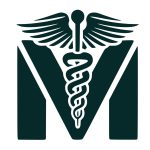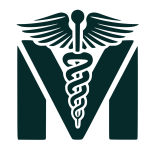Treatment
Colon Cancer
What is Colon Cancer?
Colon cancer (also called colorectal cancer when including rectal cancer) is a serious but often preventable and treatable disease when detected early. Cancer that starts in the colon (large intestine) or rectum (the last several inches of the colon before the anus). It usually develops from precancerous growths called polyps (especially adenomatous polyps). Not all polyps become cancerous, but removing them during screening prevents cancer.
- Common Symptoms (Often appear later in the disease):
- Persistent change in bowel habits:Diarrhea, constipation, narrowing of stool.
- Rectal bleeding or blood in the stool:(Bright red or very dark).
- Persistent abdominal discomfort:Cramps, gas, pain.
- Feeling that the bowel doesn’t empty.
- Unexplained weakness or fatigue.
- Unexplained weight loss.
- Iron deficiency anemia(due to chronic slow bleeding).
Crucially Important:
- Early-stage colon cancer often has NO symptoms. This is why screening is vital.
Screening (The Best Defense):
- Goal: Find and remove precancerous polyps before they turn into cancer, or detect cancer at its earliest, most treatable stage.
- Recommended Starting Age (US): 45 years old for average-risk adults. (May start earlier/have different intervals based on risk factors).
- Screening Methods:
- Stool-Based Tests: Detect blood or abnormal DNA in stool.
- Fecal Immunochemical Test (FIT) / Guaiac-based FOBT: Yearly.
- Stool DNA Test (e.g., Cologuard): Every 3 years.
- Positive stool tests require a follow-up colonoscopy.
- Visual Exams:
- Colonoscopy: Gold standard. Examines the entire colon; polyps can be removed during the procedure. Recommended every 10 years for average risk (or more frequently if polyps are found). Required for positive stool tests.
- CT Colonography (Virtual Colonoscopy): Uses X-rays/CT scans. Every 5 years. Requires bowel prep. Polyps can’t be removed; a colonoscopy is needed if found.
- Flexible Sigmoidoscopy: Examines the lower part of the colon. Every 5 years (often combined with FIT).
- Stool-Based Tests: Detect blood or abnormal DNA in stool.
Risk Factors:
- Age: Risk increases significantly after age 45-50. Most cases are diagnosed in people over 50, but rates are rising in younger adults.
- Personal History: Previous colorectal cancer or polyps, inflammatory bowel disease (IBD) like Crohn’s disease or ulcerative colitis.
- Family History: Close relatives (parent, sibling, child) diagnosed with colorectal cancer or polyps, especially if diagnosed young, or multiple relatives.
- Inherited Syndromes: Familial Adenomatous Polyposis (FAP) or Lynch syndrome (Hereditary Non-Polyposis Colorectal Cancer – HNPCC) significantly increase risk.
- Race/Ethnicity: African Americans have the highest incidence and mortality rates in the US.
- Lifestyle Factors:
- Diet high in red/processed meats, low in fiber, fruits, and vegetables.
- Physical inactivity.
- Obesity.
- Smoking.
- Heavy alcohol use.
- Type 2 diabetes.
Diagnosis:
If symptoms or screening suggest cancer, diagnosis involves:
- Colonoscopy: Allows direct visualization and biopsy (removing tissue samples).
- Biopsy Analysis: A Pathologist examines tissue under a microscope to confirm cancer and determine type/grade.
- Imaging: CT scans, MRI, PET scans, chest X-ray to determine stage (how far cancer has spread – Stage 0 to IV).
Treatment:
Depends heavily on stage, location, and overall health.
- Surgery: Primary treatment for localized cancer. Options include:
- Polypectomy/Early Local Excision (for very early cancers).
- Colectomy (removal of part or all of the colon).
- Minimally invasive surgery (laparoscopic or robotic).
- Chemotherapy: Used before surgery (neoadjuvant) to shrink tumors, after surgery (adjuvant) to kill remaining cells, or for advanced cancer to control growth.
- Radiation Therapy: More common for rectal cancer than colon cancer. Used before/after surgery or for symptom relief in advanced cases.
- Targeted Therapy: Drugs targeting specific molecules involved in cancer growth (e.g., bevacizumab, cetuximab). Often used with chemo for advanced cancer.
- Immunotherapy: Drugs that help the immune system recognize and attack cancer cells (e.g., pembrolizumab, nivolumab). Used for specific genetic profiles in advanced cancer.
- Ablation/Embolization: Procedures to destroy tumors or block blood flow to them, often for metastases in the liver/lungs.
Prevention:
- Get Screened Regularly! Starting at age 45 (or earlier if high risk).
- Know Your Family History: Discuss it with your doctor.
- Healthy Diet: High in fruits, vegetables, and whole grains; low in red/processed meats.
- Regular Exercise: Aim for at least 150 minutes of moderate activity per week.
- Maintain a Healthy Weight.
- Don’t Smoke.
- Limit Alcohol: No more than 1 drink per day for women, 2 for men.
- Discuss Risk with Your Doctor: Especially if you have IBD or genetic syndromes.
Prognosis (Outlook):
- Highly dependent on stage at diagnosis.
- Localized (Stage I/II): 5-year survival rates are very high (over 90% for Stage I, ~85-90% for Stage II).
- Regional (Stage III): Cancer spread to nearby lymph nodes. 5-year survival ~70-75%. Treatment usually involves surgery + chemo.
- Distant (Stage IV/Metastatic): Cancer spread to distant organs (liver, lungs, etc.). 5-year survival is lower (~15-20%), but is improving with newer treatments. Treatment focuses on control and quality of life.
If you are 45 or older, or have any risk factors or symptoms, talk to your doctor about screening options immediately. Early detection saves lives.


